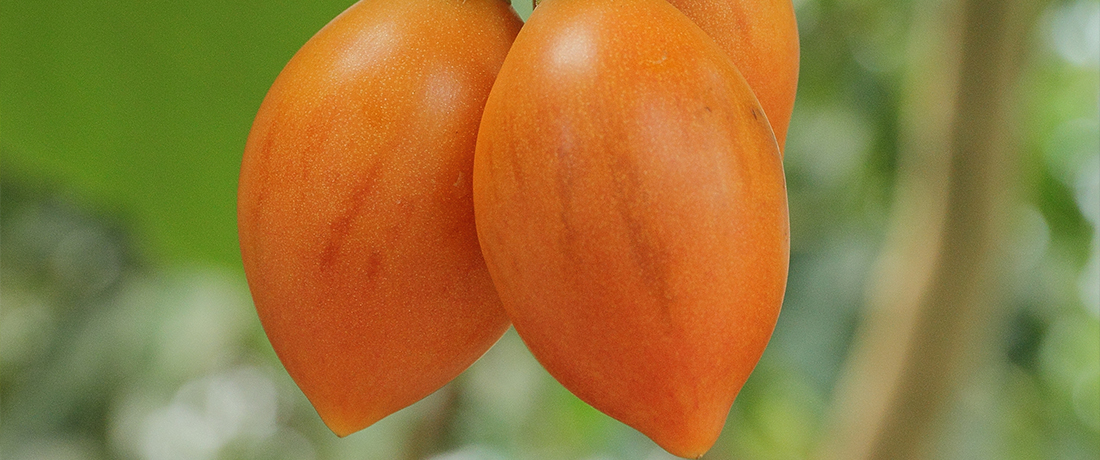
 Important note about plant availability. Important note about plant availability.There are hundreds of factsheets on our website provided for your information. Not all plants will be available at all times throughout the year. To confirm availability please call (03) 8850 3030 and ask for the nursery. |
For those of you who may not have the greenest of thumbs, here is a perfect productive plant for you to try growing. The tamarillo, sometimes called the Tree Tomato, is a member of the solanaceae family, which also includes other staples like regular tomatoes, eggplants, capsicums and potatoes. It isn’t all that well known here in Oz, although if you ask a relative or friend from New Zealand, they will soon want to be your best bud when they hear you have a tree which is covered with these delicious fruits. Firstly originating in South and Central America with the rest of the Solanaceae edibles, tamarillos were introduced to New Zealand by Asia back in the late 1800’s.
The tamarillo is a fast growing, but short lived small tree, lasting only 5 to 7 years. However fruit can be expected in 18 months from planting. You don’t get much faster results than that when it comes to perennial plants. For a longer lived tree (approximately 15 years) grow a grafted tamarillo.
When planting your tree, it is important to know that they are a shallow rooted plant and will prefer to have some space all to themselves. Choose a sunny spot that has some protection against hot wind and good drainage is essential. If you live in a frosty area that drops below -3ºC, consider putting a light cover over your tree in winter time. If there is any damage to the soft fleshy growth, just tip out these shoots and your tree will recover without too much worry. Tamarillos can also be grown in large pots. Expect your tree to get approximately 2-3metres tall and 1-2 metres wide. Lop seedling grown plants at the 1m tall stage, as they need some encouragement to grow bushy.
At planting stage, dig in lots of organic matter to the soil and add some blood and bone. Applying a thick layer of mulch, such as straw, will also help reduce moisture loss and fight competition against weeds. Although not highly demanding as far as water is concerned, they benefit from a good regular drink, especially in hot and windy weather. If dry their leaves will droop down, but spring back if given a good soak.
Tamarillos produce loads of edible egg shaped fruits, these first appear in early autumn, but can take up until September to ripen in Melbourne. The harvest time can vary, however once the fruit turns to a rich red, you’ll know when to start cutting them off, and don’t forget to leave a small stalk. The fresh fruit can be kept in the fridge for up to 8 weeks.
Fruit flavour is described as being somewhere between kiwifruit and passionfruit. The thick skin is where the bitter flavour comes from, and flesh is generally sweet, particularly if you have a yellow skinned variety.
When it comes to uses, the tamarillo is endless: desserts, jams, sauces and of course, fresh in a fruit salad (which is sure to get all your guests talking).
Pests aren’t usually a huge problem with tamarillos, just the occasional aphid party is the one to keep an eye out for, they are sometimes in masses under the leaves but can be controlled very easily with low a toxic spray like pyrethrum.
Varieties
Red skinned
The red tamarillo was developed in the 1920’s by an Auckland nurseryman from seed from South America. It has a deeper colour skin when it’s grown in cooler conditions, and is the least sweet of the different colours.
Amber/Orange skinned
This is said to be the sweetest of the three
Yellow skinned
Yellow skins are slightly sweeter than the reds but not as sweet as the amber.
